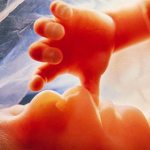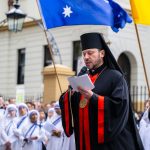Written by Kathy Clubb
Archbishop Carlo Maria Vigano’s recent letters condemning the Second Vatican Council have unsurprisingly provoked much debate among Catholics. There is a great deal of emotion surrounding the Council’s validity or otherwise, despite the conciliar Fathers explaining at the time that it was to be a pastoral council, and not a doctrinal one. This distinction has led some, like Vigano, to believe that it is licit to call for a total rejection of the council, as it contains nothing that is binding on Catholics. Others, like Bishop Schneider, think that the Council can be redeemed by having problematic texts clarified and the documents purged of their errors. Catholics belonging to neither of those groups include those who are most likely to be shocked by Vigano’s comments: those conservative Catholics in the ‘springtime of the Church’ camp and liberals, who believe the Council was responsible for revealing the Church’s true nature and mission.
This article seeks to avoid controversy by giving little opinion, and instead focussing on the words of the Council Fathers themselves, before, during and after the event. Its aim is to show that there were concerns about the timing, content and serious omissions surrounding the discussions and documents of Vatican II. It also hopes to show that Archbishop Vigano is not a lone wolf, but rather one voice in a chorus of criticism that has been raised against the Council for more than fifty years.
The Second Vatican Council was announced by Pope John XXIII on January 25, 1959 and was held from October 1962 to December 1965 over four sessions. John XXIII died in 1963 and the completion of the Council was realised by Pope Paul VI.
Among all Church Councils, this one was singular because of the role played by the periti – the consulting theologians, many of whose writings had been condemned by previous Popes. Also significant is the fact that, unlike all previous Ecumenical Councils, Vatican II was not convened in response to a particular heresy or threat. In fact, John XXIII wrote in his first encyclical that he did not believe the Church to be under attack at all, when he wrote, “At the present time it is no longer a matter of ridding the Church of this or that particular heresy or of certain specific disorders. Thanks be to God there are none in the Church.”
Far from trying to correct the errors of Modernism, that “synthesis of all heresies”, or trying to combat the omnipresent threat of Communism, Pope John XXIII wanted his council to “open the Church to the world” in a spirit of aggiornamento, or “bringing up to date”. However, only three years after the end of the council, his successor was forced to admit that something had gone horribly wrong:
“The Church is in a disturbed period of self-criticism, or what would better be called self-destruction. It is an acute and complicated upheaval which nobody would have expected after the council. It is almost as if the Church were attacking herself.”[1]
While his observations are sadly quite accurate, Pope Paul VI was not entirely truthful in saying that ‘nobody would have expected’ the enormous upheaval; there had been plenty of warnings even decades before such a council was convened. One prophetic example involves the apparitions at Fatima.
As Cardinal Pacelli, the future Pope Pius XII had, in 1933, expressed his misgivings about any attempts to alter Church teaching from within:
“I am concerned about the confidences of the Virgin to the little Lucia of Fatima. This persistence of the Good Lady in face of the danger that threatens the Church is a divine warning against the suicide that the alteration of the Faith, in its liturgy, its theology, and its soul, would represent.
I hear around me innovators who wish to dismantle the Sacred Chapel, destroy the universal flame of the Church, reject her ornaments, and make her remorseful for her historical past. Well, my dear friend, I am convinced that the Church of Peter must affirm her past, or else she will dig her own grave.”[2]
According to Roberto de Mattei, many conservative Cardinals welcomed the Council precisely because they believed it was a chance to affirm tradition. The Franco-Prussian war had halted the First Vatican Council in 1870, and these orthodox men believed that a new Council would lead to an updated Syllabus of errors. [3]
However, it was obvious to many observers that the Council was being derailed from the word go. Roberto de Mattei recounts the thoughts of Cardinal John Heenan of Westminster, who wrote that after the first session, Pope John XXIII must have felt that his “episcopal safari” (Heenan’s description of the Pope’s project) was “less like a safari” and more like a “siege.”[4]
Cardinal Heenan later confided that once he realised there was a concerted effort to thwart his plans, Pope John had tried to rally a group of bishops to make the Council end early. Unfortunately, the Pope died soon after and the Council continued.[5]
Like Pope John, some attendees realised what was happening and became quite vocal about expressing their dismay during the Council sessions. Master General of the Dominicans, Cardinal Browne, was one such prelate. When it became clear during discussion on Gaudium et Spes that the two ends of marriage would be transposed, he shouted to the assembly:
“Caveatis, caveatis! If we accept this definition we are going against the whole tradition of the Church and we shall pervert the whole meaning of marriage.”[6]
It was not only errors of commission that were railed against, but also cases of omission. A solid bloc of five hundred and ten bishops asked Pope Paul VI to consecrate Russia to the Immaculate Heart of Mary, in line with Our Lady’s request at Fatima – this would have been the perfect opportunity to do so. Unfortunately, the Pope refused, and – it must be said – we are still reaping the consequences of that failure.[7]
Closely related to Fatima was the problem of Communism – an error that many Council Fathers expected to see exposed. In one of those inexplicable inconsistencies that abounded in and around the Council, Paul VI’s predecessor, far from condemning Communism, had said in his opening address, that “the conditions of modern life have removed those innumerable obstacles by which the children of the world once impeded the free action of the Church.” One wonders how a man of John XXIII’s stature could be so far removed from reality: he only needed look at post-Stalin Russia, Mao’s China and the newly-built Berlin Wall for hard evidence of those obstacles.
During the second year of the Council, twenty-five bishops wrote a letter to those in charge of setting the agenda, warning that “tomorrow the Council will be reproved – and justly so – for its silence on Communism, which will be taken as a sign of cowardice and conniving.”[8] Again, nothing was done, and the prophecy about justified criticism of this omission has been fulfilled the world over.
By the end of the Council the threat of Communism was still in the minds of many of the Church Fathers; four hundred and fifty of them signed a petition requesting that Communism be condemned by the assembly. When the petition was presented during the final session, it was rejected – shockingly – even by Bishop Karol Wojtyla.[9].
As if to foretell the consequences of failing to condemn Communism, Cardinal Antonio Bacci stated:
“Every time an Ecumenical Council met, it always resolved the great problems that were troubling that period and condemned the errors of the time. Silence on this issue, I believe would be an unforgivable lacuna, actually, a collective sin. […] This is the great theoretical and practical heresy of our times; and if the Council does not deal with it, it may give the impression of a failed Council”.[10]
In addition to these serious omissions and commissions, two incidents serve to suggest the climate inside the hall during the Council. The following story was reported by a secular newspaper at the time: it was the response of the bishops after Pope Paul VI insisted on exercising his supreme apostolic authority by clarifying the definition of the term “collegiality” in Lumen Gentium.
“As Pope Paul was carried into St. Peter’s on his sedia gestatoria, he passed between two rows of 2100 stonily silent bishops. No applause from the bishops’ stalls greeted him. Even as the Pope made a simple blessing sign, only one in ten of the bishops crossed themselves. Newsmen witnessing the scene double-checked with each other about what they were seeing.”[11]
This unfortunate episode is an example of the arrogance rife among the princes of the Church during the Council, and which was on display for the world to see. A second example, related by Anne Roche Muggeridge In her book, The Desolate City, recounts the shameful treatment of the venerable Cardinal Ottaviani:
“When Ottaviani stood up in the Council to demand of his brother bishops whether they realised that in the liturgical programme they were setting in motion a revolution, the presiding Cardinal Joseph Frings ordered his microphone to be turned off when he exceeded his time limit, a shocking insult to a man of Ottaviani’s years, gifts, and service, an act impossible to imagine having happened a year before. The blind old priest failed for a moment to realise what had been done until the exultant cheers of many of his progressive brothers alerted him.”[12]
The same Cardinal Ottaviani was involved with a group of liturgists, theologians, bishops and pastors who prepared a scathing critique of the Council’s changes to the Mass, known as the Ottaviani Intervention. This document was handed to Pope Paul VI in September of 1969 and claimed that the New Mass represented a “striking departure from the Catholic theology of the Mass as it was formulated in Session 22 of the Council of Trent.”[13]
For the purposes of this article, the existence of this document serves to establish that there was a considerable backlash to the General Instruction on the Roman Missal and to the New Mass itself, both of which were products of Vatican II. Another prelate who expressed his dismay at changes to the liturgy was Archbishop R.J. Dwyer of Portland, Oregon. He wrote after the Council:
“The great mistake of the Council Fathers was to allow the implementation of the Constitution on the Sacred Liturgy to fall into the hands of men who were either unscrupulous or incompetent. This is the so-called ‘Liturgical Establishment,’ a Sacred Cow which acts more like a White Elephant as it tramples the shards of a shattered liturgy with ponderous abandon.” [14]
But the New Mass wasn’t the only source of concern for some who had been present at the Council. Bishop William Adrian from Nashville, Tennessee, for example, was concerned about the influence of relativism and of heterodox theologians such as Teilhard de Chardin, when he said: “These liberal theologians seized on the Council as the means of decatholicizing the Catholic Church while pretending only to de-Romanize it.”[15]
It should be clear by now that some of the more orthodox attendees had serious reservations while the council was still in session. What is less-widely acknowledged is that some of those liberals who fully supported the innovations when they were introduced came to regret the consequences of those innovations later on.
One of those was Paul VI himself, who during the closing session of Vatican II announced: “Profane and secular humanism has shown itself in its own terrible stature and has in a sense defied the Council. The religion of God made man has come up against the religion of a man who makes himself God.”[16]
This Pope went on to make many similar references in the years following the Council, such as in 1969, when he said that “In many areas the Council has not so far given us peace but rather stirred up troubles and problems that in no way serve to strengthen the Kingdom of God within the Church or within its souls.”[17]
Later, in 1972, Paul VI made what is perhaps his most famous reference to the aftermath of Vatican II, when he spoke of the “smoke of Satan entering the Church” and spoke of his expectation that “… after the Council a sunny day in the Church’s history would dawn,” but that instead,” there came a day of clouds, storms and darkness.” The Pope even suggested that behind this dismal outcome was “something preternatural that came into the world precisely to disturb, to stifle the fruits of the Ecumenical Council, and to prevent the Church from bursting into the hymn of the joy of having fully regained self-awareness.”[18]
For all his optimistic talk of the “springtime in the Church”, Pope John Paul II, also expressed occasional regrets about the Council. In 1980, this Pontiff actually apologised, in his Apostolic Letter on the Eucharist, for “everything which for whatever reason, through whatever human weakness, impatience or negligence, and also through the at times partial, one-sided and erroneous applications of the Directive of the Second Vatican Council, may have caused scandal and disturbance concerning the interpretation of the doctrine and veneration due to this great Sacrament.”[19]
Then in 1986, he made a startling caveat for those trying to evaluate the fruits of Vatican II:
“One must learn how to discern them carefully from everything that may come originally from the ‘prince of this world.’ This discernment in implementing the council’s work is especially necessary in view of the fact that the council opened itself widely to the world.”[20]
If Pope John Paul II, himself a peritus at the Council, could harbour such serious reservations about its fruits, then why are traditionalists such as Archbishop Vigano accused of schism for voicing similar concerns?
Pope Benedict XVI was also a present at the Council as a young priest and peritus to Cardinal Joseph Frings, who was then the Archbishop of Cologne. He voiced concerns similar to those of Paul VI, when as Cardinal Ratzinger, he wrote that the period since the council has been: “Decidedly unfavourable for the Catholic Church ….What the Popes and the Council Fathers were expecting was a new Catholic unity, and instead one has encountered a dissension which … seems to have passed over from self-criticism to self-destruction.”[21]
This article has only touched on a small part of the huge body of work, both new and old, that is critical of the Second Vatican Council. Whether or not you agree with Archbishop Vigano’s assessment that the entire council needs to be scrapped, or like Bishop Schneider, think that it needs to merely be purged of its errors, it is obvious that even those who organised and attended the Council admitted that it was problematic from day one.
Perhaps a clue as to why this is so can be gleaned from an ancient observation. In 1871, England’s Cardinal Henry Manning, citing a Tridentine historian, reminded his priests that “… to convoke a General Council, except when absolutely demanded by necessity, is to tempt God.”[22]









